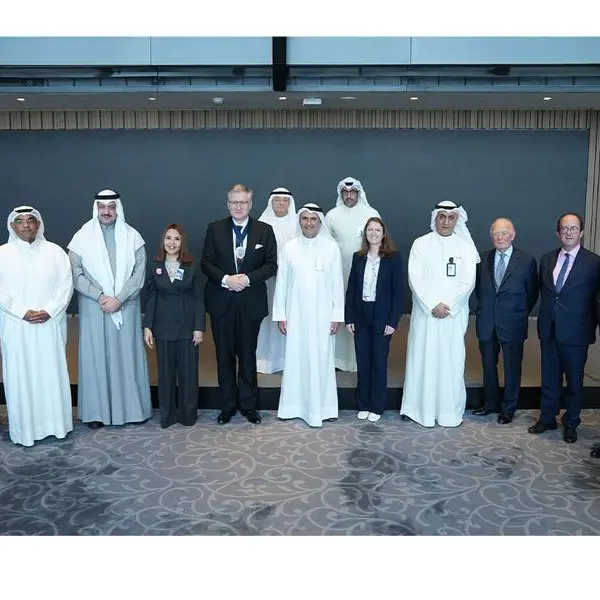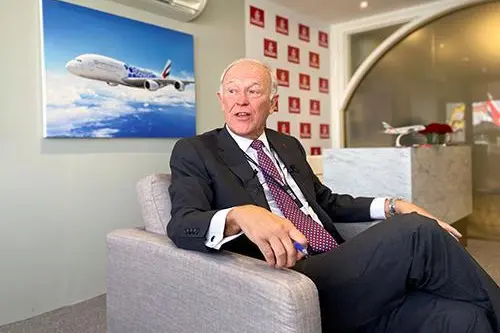Middle East Only Region to Record Double-Digit Growth in Passenger and Freight Traffic
Dubai, United Arab Emirates: The Middle East has been at the forefront of aviation's passenger traffic growth rate in terms of revenue passenger kilometers this past decade. At the same time it has also led with the highest freight growth rate, being the only region recording a two digit growth from 2013 onwards.
According to a report by Al Masah Capital released this morning, the GCC has kept pace with the increasing demand for air travel using its network of 58 airports to good advantage.
In terms of passenger traffic, Dubai International Airport (DIA) is the busiest airport in the region, handling close to 70 million passengers in 2014, followed by the Doha International Airport (26 million) and the Abu Dhabi International Airport (20 million). In 2014, DIA beat London's Heathrow airport to become the world's busiest airport for international passengers.
"The growth spurts in the industry may differ across various regions with the improving global economy being a key driver,' says Shailesh Dash, CEO of Al Masah. According to the findings in the report Dash adds, "We believe a 5% annual growth in traffic and a commensurate 4.7% spike in cargo is very much on the cards over the next twenty years. Both, the demographics and the strong infrastructure favor such a positive trend."
The region's strategic location as a bridge between the East and West also makes it possible to connect 67% per cent of the world's population into a maximum 8 hour travel zone which is why the passenger traffic has risen from 42 million in 2004 to 150 million in 2014 giving the GCC a market share rise from 2.5 to 4.7% in the same time frame.
Al Masah underscores the factors that have contributed tangibly to the robust state of the GCC's aviation sector. High spending power (three times that of the global level) a low road density, significant investment by government in aircraft and development of futuristic city-ports, a concerted effort to encourage tourism with promotional incentives like shopping festivals, shopping malls and emphasizing the seven S factors: shopping, sun, sea, security, sport, systems and standards. The limited rail and other surface options have also given air travel a lift.
Dash says that the World EXPO 2020 in Dubai and the FIFA World Cup 2022 in Qatar are expected to further boost tourism, driving demand for air travel. Dubai, for example, is expecting the influx of 20 million tourists per year until 2020.
Seeing as how fuel accounts for 30-plus percent of an airline's costs, cheap aviation fuel ensures a stable supply of aviation turbine fuel for the region's carriers at prices lower than that for their global competitors and this offers them a sharp edge especially when the service levels are competitive and often even better.
The Al Masah report indicates that the GCC serves as an ideal hub for long-haul flights and for air freight transported to and from manufacturing hubs in the Asia-Pacific region. It has been seen that travelers across the globe prefer to break their journey in the GCC thereby making it a major transit point for intercontinental air traffic.
One of the most laudable aspects are the liberal policies of the GCC governments intended to enhance transparency in the aviation sector and be progressive by offering the private sector the opportunity to be part of the industry.
Instead of being protectionist the Open Skies Policy by the UAE is one such effort aimed at establishing a liberal operating environment.
Kuwaiti authorities liberalized the aviation industry by granting three new licenses to airline companies in 2003. In 2011, Saudi Arabia's General Authority for Civil Aviation opened up the aviation sector to foreign airline operators. Following this, Qatar Airways and Gulf Air were granted licenses and set up two new airlines - Al Maha and Saudi Gulf Airlines, respectively - in the country in 2014. Oman plans to open up the industry to private sector involvement.
There are, however, a few issues that need to be addressed, according to the Al Masah findings. One of the key challenges for the industry is the relatively weak air traffic management and regulation in the region combined with a shortage of trained personnel and flexibility in airspace usage. The concern of future congestion is not unfounded and could contribute to high operating costs, flight delays and low operating efficiencies.
At present only 50% of the GCC airspace is available for commercial aircraft (the remaining airspace is largely controlled by the military), leading to the use of inefficient flight corridors and higher costs for airlines. The lack of coordination between commercial and military air traffic management has resulted in large operational inefficiencies (owing to underutilization of the available airspace).
Dash believes there is widespread support for establishing a single regional air traffic management system, similar to Europe's Eurocontrol, to be implemented in the Gulf region and rolled out to cover other countries in the Middle East. "If GCC countries are expected to handle more than 400 million passengers annually by 2020 they will have to take some measures in that direction."
Another major problem could be with trained staff. The GCC will need more than 35,000 new pilots and 50,000 new technical personnel over the next two decades.
The search has to start now.
With 850 new aircraft inked into the books the risk of over capacity is high seeing that nearly 65% of the purchase is marked for expansion. With landing rights becoming an issue there could be an excess capacity. Securing landing slots is also a major impediment and can slow down expansion schedules.
In the recent past, airlines based in Europe and North America have lobbied with their governments to limit the number of landing slots for GCC carriers. For example, Germany and Canada have decided to not allocate additional landing slots to Emirates,
It is for these reasons that the UAE's General Civil Aviation Authority (GCAA) has urged GCC agencies to collaborate to address the common issue of traffic congestion in the region and effectively manage the expected rise in traffic in the coming years. GCAA aims to build a unified aviation traffic monitoring system in line with the European's Eurocontrol integrated air traffic management system.
Dash concludes by saying the mood is upbeat and with good reason. "The GCC region has a young, growing population and a large expatriate population," he says, "The relatively high standard of living, job opportunities, medical facilities and ease of connectivity with the rest of the world have led to strong economic growth in recent years. The GCC region's population has grown at around 3.5% annually over the last five years and is characterized by high levels of urbanization which all means more air travel."
© Press Release 2015



















